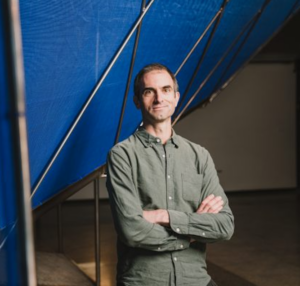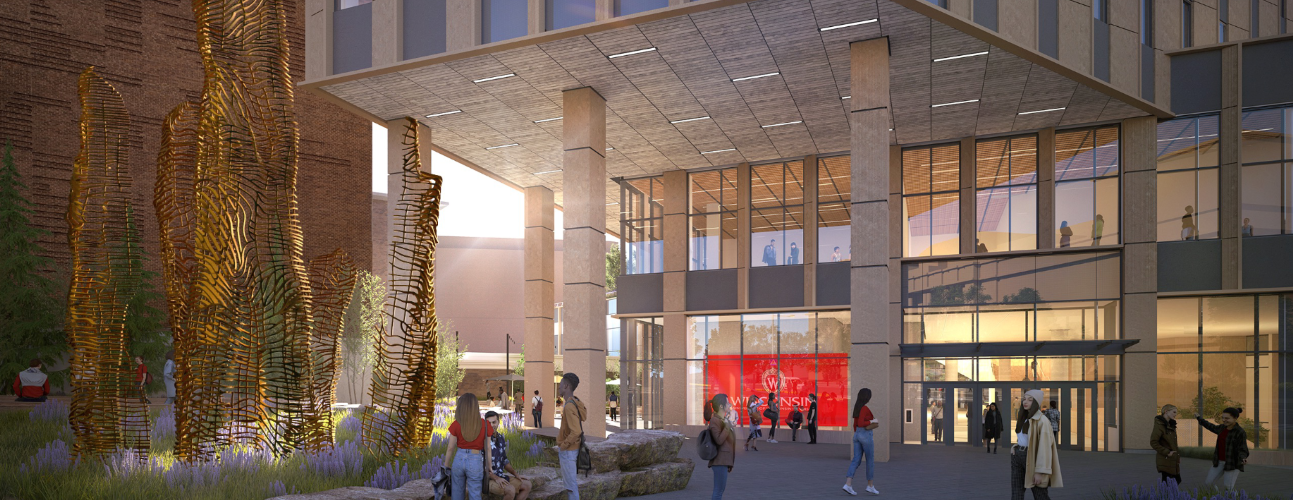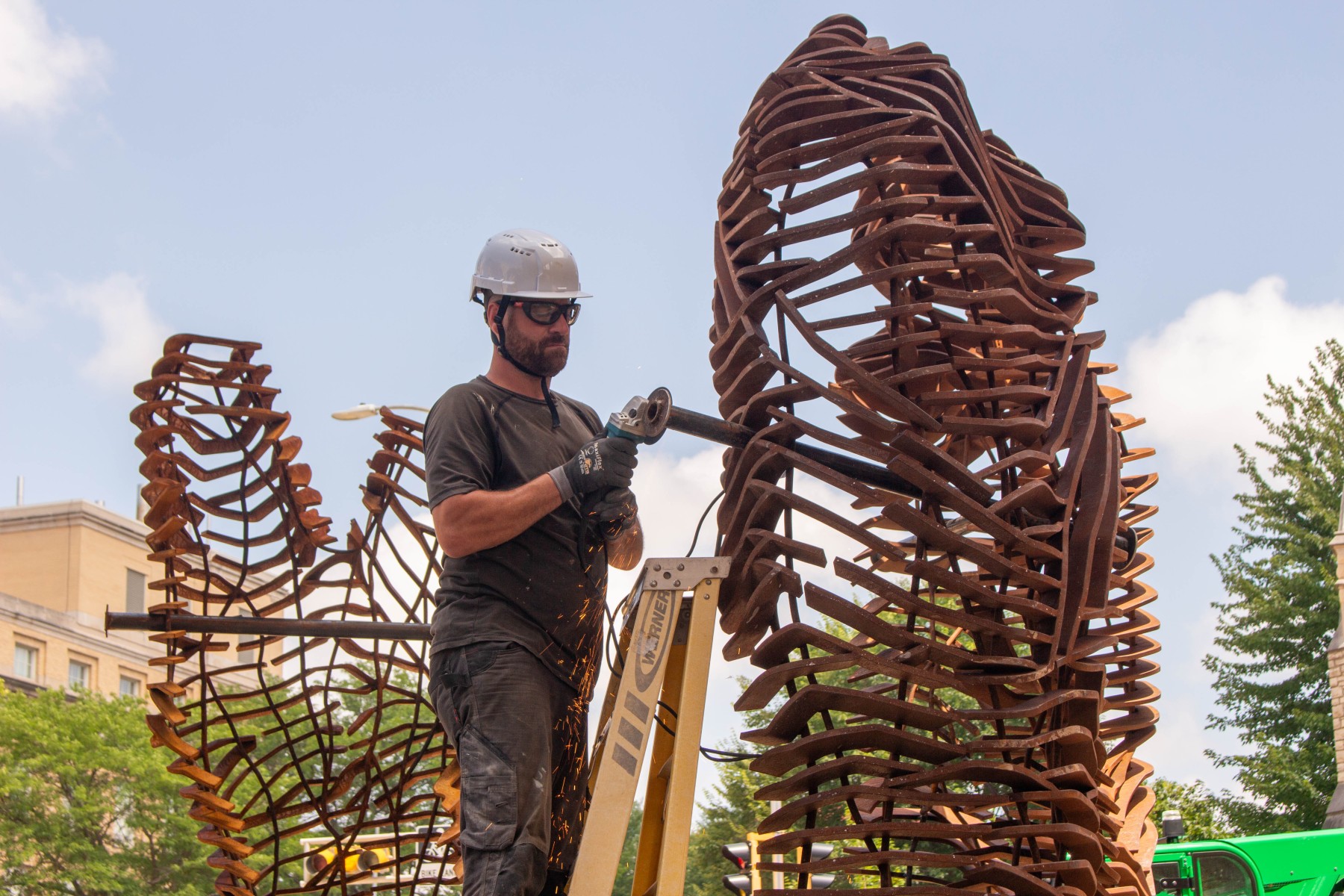 Created by Seattle-based sculpture artist, Clayton Binkley, Ghost Forest developed out of his thinking about how people interact with their local environment, its embedded histories, and how its physical, social and political dimensions change over time. The forms reference the bark structures of Bur Oak and Black Locust trees that are easily identifiable all over the UW—Madison campus and are emblematic of both the native prairie landscape and the more recent impression of “nature” in the area as well as having specific links to the development of modern ecological thought at UW Madison.
Created by Seattle-based sculpture artist, Clayton Binkley, Ghost Forest developed out of his thinking about how people interact with their local environment, its embedded histories, and how its physical, social and political dimensions change over time. The forms reference the bark structures of Bur Oak and Black Locust trees that are easily identifiable all over the UW—Madison campus and are emblematic of both the native prairie landscape and the more recent impression of “nature” in the area as well as having specific links to the development of modern ecological thought at UW Madison.
Ghost Forest is made out of weathering steel and is 16ft tall. The sculpture will stand outside of the northeast entrance of Morgridge Hall.
Artist Q&A
What is the background story that inspired you to create this piece?
Ghost Forest developed out of my thinking about how people interact with their local environment, its embedded histories, and how its physical, social and political dimensions change over time. The forms reference the bark structures of Bur Oak and Black Locust trees that are easily identifiable all over the UW Madison campus and are emblematic of both the native prairie landscape and the forested areas that have become more common and also have specific links to the development of modern ecological thought at UW Madison.
In response to these cues, I began thinking about landscape not as a vista but a set of structural conditions that make a place the way that it is and that over time are manipulated by a kind of dance of local, regional and global actors. Thinking about how to represent these ideas got me into some very thorny terrain about where these concepts begin and end and how to represent them. This piece is as much derived from specific iconography as it is about a struggle to represent ideas that resist containment.
Formally, the sculptures are intended to be somewhat elusive. From a distance they appear transparent; physically present but appearing as a shimmering outline that changes as one moves around the artwork. As viewers move closer to the artwork, the forms become more solid as the flat faces of the bars begin to fill one’s field of view rewarding closer examination and interaction on a personal scale. This formal metaphor felt apt to me in thinking about how to represent states of nature that often reveal themselves on close inspection but disappear into a sea of complexity as one steps away. My hope is that, like many things in life, it is worth giving Ghost Forest a closer look.
Describe the process you worked through to create this piece.
Starting from sketches and an overall vision of how the artwork should be situated in the space in front of Morgridge Hall, I modeled each of the 5 forms at small scale in clay. I was thinking of the forms as somewhat figurative and also that the massing of each form reflects the distinctive shape of the bark of Bur Oaks and Black Locusts that I saw all over campus as well as regionally in Southern Wisconsin.
Those clay forms were then 3d scanned and the resulting mesh surface brought into CAD modeling software. Within the CAD software I was able to sketch on the scanned surface the pattern of steel bars that defines the volume and texture of the sculptures. We then used a script that we developed for this project to translate that linework into flat, piecewise planar patterns that were laser cut and bent on a CNC press brake by third party fabricators. After bending, the pieces were held in place in the studio by plywood jigs that followed the shape of the sculptures and my team and I welded them together. With all the bent exterior assemblies completed, my assistants and I then welded in the hot bent rods that give the sculptures their vertical support and create the opposing pattern on the inside surface of the forms. This part of the process was more improvisational, the paths of the vertical bars responding to the shape of the surface that I saw in front of me as each of the pieces neared completion. The 5 pieces were built one after the other so when drawing the pattern for the exterior elements, I could respond to things that I learned from seeing previous pieces completed.
All off the steel in the sculptures is a “weathering steel” that will form a protective surface patina as it rusts giving the sculptures their distinctive color and protecting from further corrosion. This rusted patina in my mind also softens the steel and makes it refer more to its geological origins as well as change color in the rain or sun.

